Effective Behavior Management Strategies in Preschool

Published Date: 05/09/21
How can preschool teachers manage their classroom effectively?
Challenging behaviors. It's a leading cause of stress among preschool teachers. Staff are frustrated and it contributes to the high turnover rate in early childhood education.
While educational requirements for preschool teachers vary between states, often they have very little training and haven't been given the tools to manage their classrooms effectively. Professional development in the early childhood education industry isn't as widely accessible as it should be, leaving teachers to fend for themselves without proper classroom management techniques.
Add to that the fact that a preschool classroom may have 20 (or more!) children and some have mixed-age groupings. While research supports the benefits of mixed-ages in the classroom, young children will exhibit a wide range of behaviors throughout the day and those challenging behaviors are typically different in 2-year-olds than they are in 5-year-olds. Gaining control with positive behavior management techniques is essential.
Why do children exhibit challenging behaviors?
The primary purpose of preschool is to help young children develop social emotional skills. Often adults ascribe our logical thinking process to preschoolers forgetting that kids don't yet know how to identify and regulate emotions and often don't have the words they need to communicate how they're feeling in a positive way.
All behavior is communication
Teachers must remember that challenging behavior among preschoolers is always an attempt to communicate something and therefore you should always consider the ‘why’ of the behavior, not just the ‘what’. Observe what triggers students to act in undesired ways and provide the support needed to address them. Often these include transitions and occur when routines in the classroom are lacking or disrupted, or when overall classroom management is lacking.
Children need social emotional support
In addition to the fact that students are still developing social emotional skills and self-regulation, the environment can also be a strong contributing factor to a child’s challenging behavior in preschool. Pay attention to how children interact with their environment and search for visual cues that could contribute to negative outbursts.
Behavior versus emotions
It's important to remember that emotions and behavior are not the same thing. Children should never be disciplined for having emotions, even if you believe they are simply trying to get attention. A child’s feelings are completely valid and should be acknowledged as such, including feeling angry and frustrated. The key is providing support and teaching self-management strategies to students they can express all of their emotions in a positive way.
Trauma and disruptions at home affect behavior
Trauma outside of school or major changes at home could contribute to kids acting inappropriately as well. Examples include a new sibling, a move, divorce, or a death in the family. A preschool teacher should create an open line of communication with parents and obtain feedback so they're aware of what students are going through outside of school.
What is effective behavior management in the classroom?
Behavior management in the classroom involves the use of early childhood educational strategies and practices to prevent and manage challenging or inappropriate behavior. Throughout the day, positive behavior is modeled, praised, and reinforced. Teachers support the process of developing social emotional skills in preschoolers so students learn to effectively communicate how they are feeling in acceptable ways.
What are positive behavior support strategies in early childhood education?
Positive behavior support helps teachers understand why a student or group of students are acting in an undesired way and gives teachers methods to address it in the preschool classroom.
Use Positive Language
Classroom management in early childhood education begins with placing the focus on positive behavior instead of negative behavior. Preschool children hear negative words like 'no', 'don't', 'stop' and 'can't' all of the time. For example, a parent says, "Don't hit", "No, you can't have ice cream,"or "Stop doing that." While of course you must address unwanted behavior, it's also a your job to set expectations and teach students what they can and should do instead.
Positive Language Examples:
Instead of: You have to sit down now
You could say: Will you please join us for circle time?
Instead of: You shouldn't take the blocks from him
You could say: Next time if you want to play with the blocks, please ask kindly to use them when he's done or if you can join him.
For effective behavior management, search for ways of teaching how you want students to act, not just how you don't want them to act.
Tips: A poster is a great way of helping young children process information. Use text that says what they can do along with a visual to set expectations. Teachers can review daily during circle time - routines are so important at this age.
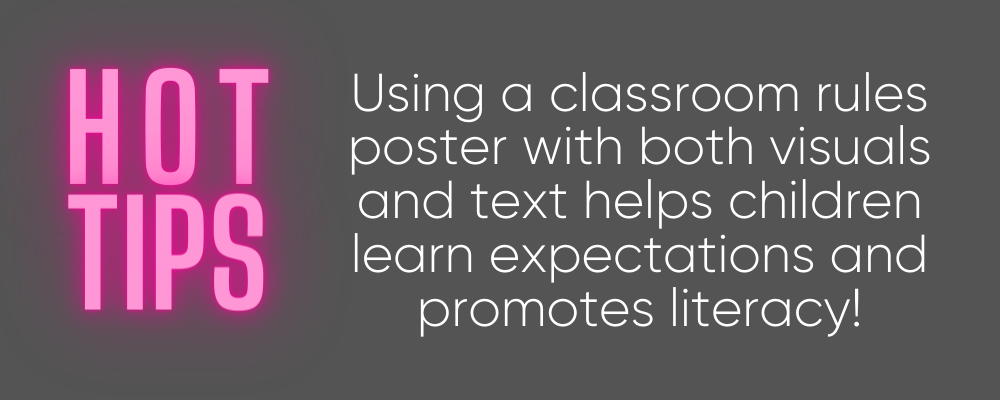
Reinforce positive behavior for classroom management
Reinforcing positive behavior is effective at any age, but more so during early childhood than any other. When a student or group of students behave appropriately, a teacher should provide specific feedback and show appreciation. Encouraging children when they meet expectations leads to more of the behavior you want to see.
Tips: Provide specific praise and acknowledgement. When a teacher says, "Good job" it doesn't promote self-confidence and leads to children seeking more praise. Instead, focus on teaching self-motivation. Use phrases like, "I appreciate how helpful you were during clean up time," and "You listened very well during circle time."
“Our favorite children’s book!” – snail & the whale"
Clearly lay out expectations and consequences and follow through with positive discipline
Teaching young children exactly what's expected and the consequences of not following the rules is one of the most important aspects of effective behavior management in a preschool classroom. And positive discipline is proven more effective than punishment. A teacher using positive discipline will communicate and enact logical consequences when expectations aren't followed.
- Set expectations using positive language: You can play with the blocks and build the highest tower you want. Blocks are for building, not for throwing.
- Communicate consequences: If you throw the blocks, we're putting them away for the rest of the day.
- Gain agreement: Do you understand?
- Reinforce: The blocks are going to be put away if you throw them.
- Follow through at the first occurrence: Giving warnings after you've set expectations and laid out consequences essentially gives a child permission to engage in inappropriate behavior at least once.
- Explain what's going on: We agreed that you could play with the blocks but that they would be put away if you threw them. I saw you throw the blocks so now we have to put them away.
- Be kind, but firm and express empathy: I understand that you're upset about putting the blocks away. We agreed that you could use them as long as you didn't throw them. We can try again tomorrow.
Remember that children are still learning and their actions, while unacceptable, are also age-appropriate. By following these steps, kids quickly learn that when a teacher says, 'these are the rules and these are the consequences' she means it.
Skip time outs, punitive measures, behavior charts, and stickers. Extrinsic rewards and punishments don't work long-term. Your job is to teach self-motivation so when preschoolers go off to elementary, they're prepared for school.
"Unlock creativity with wooden building blocks set"
Have a plan for transitions
Children often exhibit challenging behavior when they transition from one activity to another. Every teacher should have a transitions plan to ensure children follow expectations at these times. Using a 2-minute warning before changing activities as well as playing a consistent clean-up song can both help children know when an activity is ending and it's time to move on.
- Use cues for moving from one activity type to another, for example, from free play to organized activities. Great examples include strumming an instrument or singing a song. Inform children several minutes prior to a transition so they’re able to finish what they’re doing.
- Prepare the environment adequately. For example, you can put a blanket on the floor and ask the children to sit around it. You can also designate private spaces by placing carpet pieces on the floor or writing each child’s name on a piece of cardboard and positioning it on the floor. Give kids the opportunity to decorate their cardboard, making them feel more connected to it.
- Grab the children’s attention. There are various ways to do this:
- Decorate a box and place various props inside. When you use it every day, the kids will start looking forward to what you have brought that day.
- Gather boxes of various sizes, then place a clue item in the smallest box. Place that box inside the next smallest box, and so on until only the largest box is visible. As the kids open each box, their excitement for that planned activity will build up.
- Incorporate puppets in your sessions, where the puppet can introduce a particular planned activity.
- Whisper - it's a great way to get ears perked up
Create opportunities to connect 1:1 with students
A 2017 study by the University of Virginia published in the Journal of Child Development says that young children who often display disruptive behavior have been found to reduce those behaviors when teachers spend extra time with them and play individually with them. With a 1:12 ratio at school that can seem impossible, but try to incorporate opportunities into your lesson plans to make those connections throughout the day.
Let kids move
Children need to move – a lot. Some children are naturally better than others at sitting still for circle time or for table activities and others are more wiggly. Give them plenty of opportunity to get their energy out and run around. Give children who need to move more tools to help them – something as simple as a piece of string to keep their hands busy can help tremendously. Go off schedule, if needed. If you see that many children are not able to follow what you’re doing because of pent up energy, have an impromptu dance party to “shake their sillies out” and then try your lesson again.
Get children involved in decision making
School is a great place to teach about the democratic process and voting. Allowing students to have a say in activities is proven effective in the promotion of positive behavior, student learning, and collaboration in the classroom as opposed to coercion or demanding cooperation.
Engage with parents
As noted, understanding what's going on at home can give you tremendous insight into behavior at school. Engage with parents at drop off, pick up, and through bulletin boards and newsletters. Getting parents to use the same strategies at home that you use is helpful - consistency is a key component of behavior management.
What are additional ways to implement behavior management strategies?
Children are attuned to both verbal and nonverbal communication. As a preschool teacher, you need to ensure that your nonverbal communication is as strong as your verbal. Effective body language can go a long way in helping you maintain a calm atmosphere in the classroom and in creating a positive learning environment. There are several ways you can convey positivity through your body language in preschool, which includes getting down to a child’s level, smiling (yes, it’s hard sometimes, but it’s important), making eye contact, and using warm facial expressions. Your verbal communication should be positive, and strong. Children should know you’re in charge but should also feel safe and cared for. Neither yelling at children in preschool nor shaming them is appropriate.
Document the rules
It’s not enough to create a set of rules and move on. You need to make sure that those mutually respected guidelines are not forgotten. Once you’ve created a list of rules, hang them in a highly visible spot in the classroom. Since preschool children cannot yet read, use visuals they can understand. You can even make a class project out of making the poster. Keeping them involved will help promote the right mindset. Review the rules daily to ensure they're being reinforced.
Ensure preschool is play-based and hands-on
Studies show that children learn best through play and preschool should be hands-on fun. Promote active participation by listening to their interests and tailoring the activities to suit them. That doesn’t mean that children rule the roost, but if the class has a particular interest in dinosaurs and your lesson plan involves coloring butterflies, see if there’s a way to switch it up and include a T-Rex. Consider borrowing from the Reggio Emilia approach to ECE, in which students are active participants in directing their learning and are encouraged to ask questions and develop critical thinking skills.
Stimulate learning
Children are eager learners and challenging behavior often arises when they are bored. Keep your lesson plans play-based and engaging. Pose open-ended questions to children and encourage them to ask questions. Preschool children should also have ample time for unstructured play, as it’s critical to their social and emotional development and they’re learning through it as well.
Acknowledge good behavior
Catch kids doing something good! Acknowledging and praising good behavior motivates children to display more of it. And, not only is positive feedback an effective tool to help you manage behavior in preschool, it also helps build self-esteem in children. Ditch the sticker charts and tangible rewards, and instead commend children when appropriate. At pick up, give positive reports to parents when their child displayed good behavior, who will then often give additional praise, further encouraging the desired behavior.
Avoid punishments
Plain and simple, punishments don’t work. They don’t teach accountability, they don’t teach morality, and they shame children when they’re carried out publicly. Instead, focus on positive discipline and modeling good behavior.
How do you handle challenging behaviors in preschool?
Destructive behavior can negatively impact a classroom and must be dealt with. If you frame destructive behavior as connection-seeking rather than attention-seeking, it will impact how you handle it.
First, any physical altercations need to be addressed immediately. Firmly say, “No” then attend to the child who was attacked to ensure there are no injuries. Take the aggressor aside and remind him or her why the behavior was inappropriate. Use phrases like, “Hands are for helping” to reiterate the positive, expected behavior.
If a child is intentionally making a mess, ensure that they are responsible for cleaning it up as a natural consequence of their actions.
Once the disruptive behavior is addressed, here are a few things you can do:
• Evaluate what led up to the behavior. Is there a pattern you can learn from?
• If the same child always acts out, try to find triggers by looking at what led to their behavior and where they were when it happened. Then, take the appropriate measures to curb that behavior.
• Keep parents informed when destructive behavior becomes a pattern. You should discuss what tools can be implemented reinforced at home to curb the behavior.
When do disruptive behaviors become causes for concern?
Noncompliance, temper tantrums and some aggression are all pretty normal and common among preschoolers. However, sometimes, these issues can reach problematic level, and they may be signs of something more serious.
It is important to identify such cases as soon as possible because early intervention can be crucial to behavioral improvement.
Recurring disruptive behavior disorders frequently fall within two categories: oppositional defiant disorder (ODD), and conduct disorder (CD). Common symptoms in children for both of these disorders include defiance of adults and authority figures, angry outbursts, and antisocial behaviors like lying and stealing. Normally, ODD progresses into CD if left untreated as the child grows.
A child with ODD will display four or more of the following symptoms:
• Loses temper often
• Argues with adults often
• Actively defies set rules or requests
• Deliberately annoys people
• Blames others for their behavior
• Easily gets annoyed by others
• Is often angry and resentful
• Displays spiteful, vindictive behavior
A child with CD is characterized by persistent display of the following behaviors:
• Bullying, threatening or intimidating others
• Initiating physical fights
• Physical cruelty to others
• Physical cruelty to animals
• Deliberate destruction of others’ property
• Frequent lying (more than other same-age children) to avoid obligations
• Stealing nontrivial items
Final thoughts
Managing behavior in preschool can prove challenging for even the most seasoned teacher or director. Setting clear expectations, addressing behaviors immediately in a non-punitive way, and preparing children for transitions all go a long way in keeping the peace within the classroom. Additionally, identifying destructive behaviors that indicate oppositional defiance disorder or conduct disorder can assist parents in getting early intervention, which is a key long-term strategy to improvement.
By Crystal Teegarden
 Crystal is a gentle parenting mama who loves reading, cooking, and exploring new trails with her husband and son. She is from Los Angeles but currently lives in Portland, OR where she is eating all the vegan food.
Crystal is a gentle parenting mama who loves reading, cooking, and exploring new trails with her husband and son. She is from Los Angeles but currently lives in Portland, OR where she is eating all the vegan food.
Paper Pinecone is the #1 most trusted childcare directory. Childcare providers list free so parents can find the best daycare and preschools in their area.
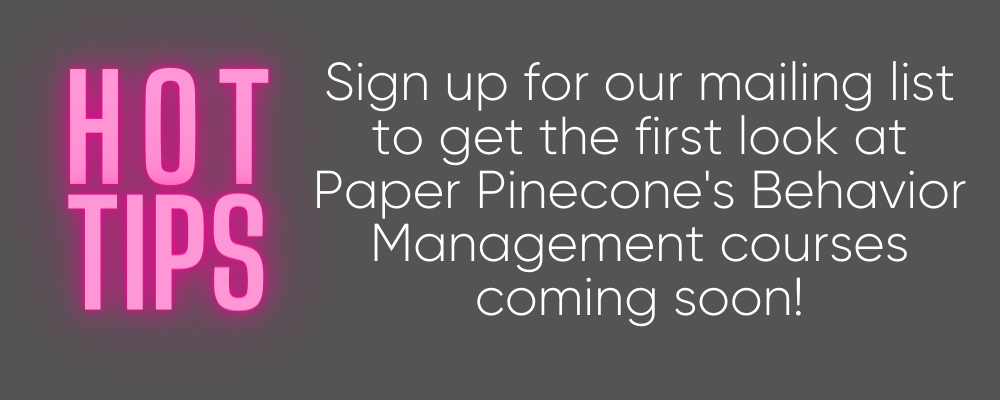

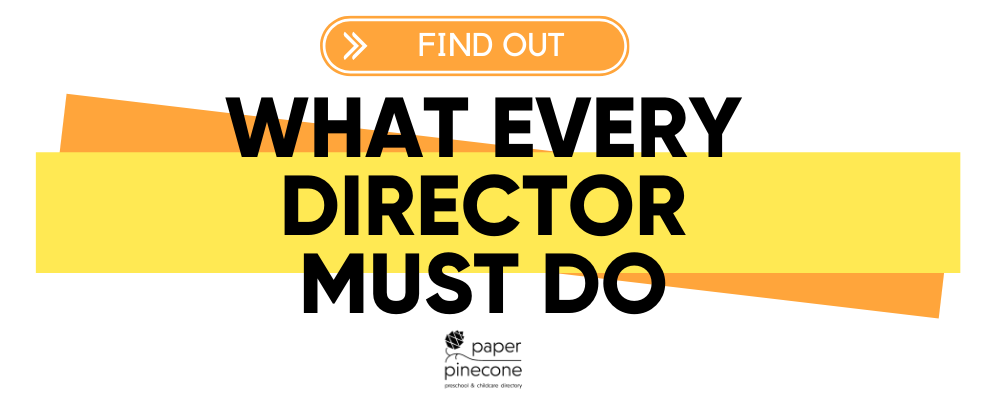
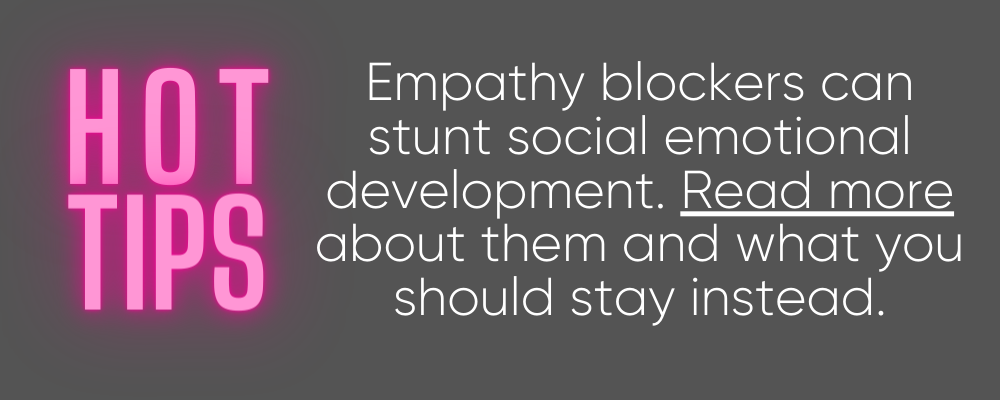
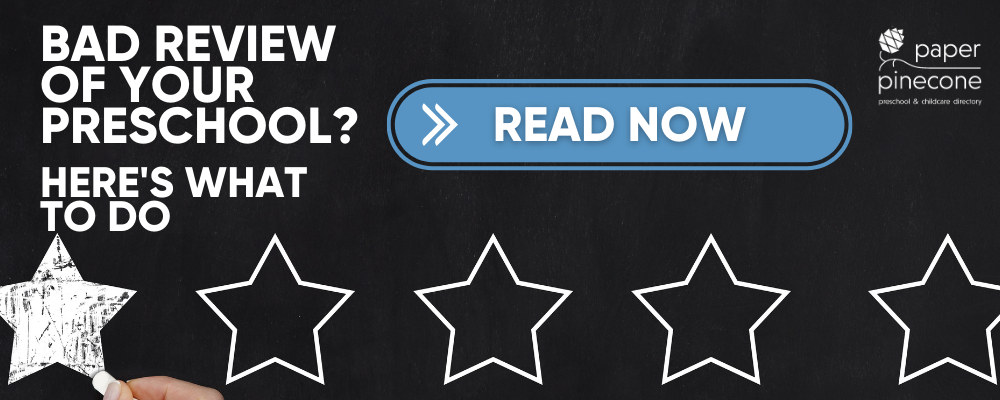
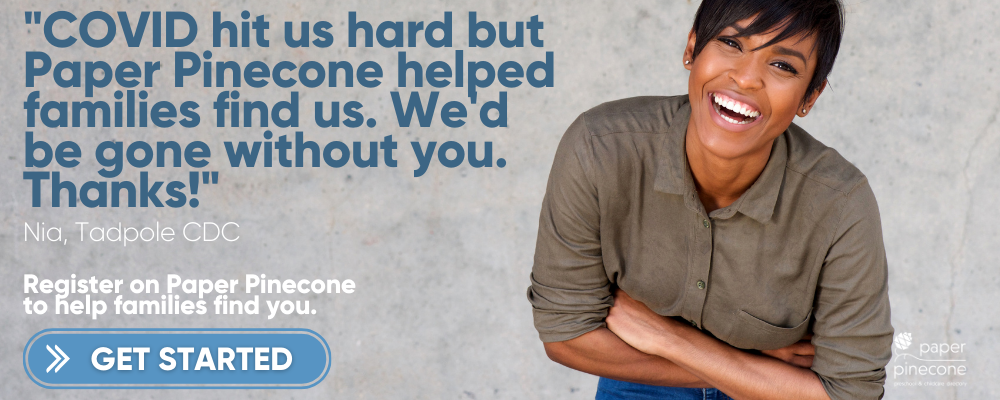
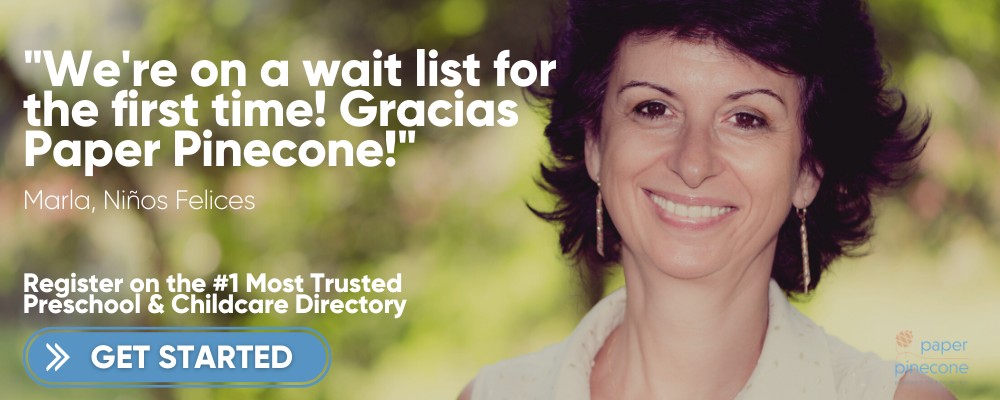


Comments
Behavior Management
Awesome Article